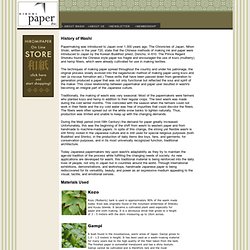

Paper Art by Bianca Chang [ 8 Fantstic Images ] Here’s some more paper-based art to inspire you.
![Paper Art by Bianca Chang [ 8 Fantstic Images ]](http://cdn.pearltrees.com/s/pic/th/paper-bianca-fantstic-images-37783261)
In a similar working style of artist Kris Trappeniers, these photos showcase the work of Bianca Chang. I love the kind of work, and as can been seen in the following images, a lot of work has gone into each piece: Paper Art “Letter O” Bianca’s site explains: The time invested in each piece gives a sense of permanence to the material. Paper Art named “Yuck” Please Stumble this Post: Paper “Peaks” Artwork named “Dot” All images above are copyright © Bianca Chang.
Like paper Art? If you liked this post, then I think you’ll also enjoy reading Paper Art Sculpting by White Papers Press. ★ Related Posts here on Design Soak Magazine ★ Paper Art - Creating Reality. Welcome to Paper Art Love ─ a site authored by Andrew Kelsall, a Creative Designer from England, UK.

Join 27K+ People who receive updates via RSS, Free Emails, FaceBook and Twitter. Also, follow me on Google+. This paper art is quite stunning and original. Artist Peter Callesen has done a great job creating realistic paper cuts that bring A4 paper sheets to life // Image above: Running Fire II. Above: Butterflies trying to escape their shadow Peter’s site explains: [...]
Above: Distant wish II Above: Eismeer. Jen Stark. Brian Dettmer - Hand Papermaking Home Page. Paper and Book Intensive. Hook Pottery Paper. Hiromi Paper International, Inc. History of Washi Papermaking was introduced to Japan over 1,300 years ago.

The Chronicles of Japan, Nihon Shoki, written in the year 720, state that the Chinese methods of making ink and paper were introduced to Japan by the Korean Buddhist priest, Doncho, in 610. The Prince Regent Shotoku found the Chinese style paper too fragile and encouraged the use of kozo (mulberry) and hemp fibers, which were already cultivated for use in making textiles. The techniques of making paper spread throughout the country and under his patronage, the original process slowly evolved into the nagashizuki method of making paper using kozo and neri (a viscous formation aid.) These skills that have been passed down from generation to generation produced a paper that was not only functional but reflected the soul and spirit of the maker.
Traditionally, the making of washi was very seasonal. During the Meiji period (mid-19th Century) the demand for paper greatly increased. Materials Used. : Saloukee: Paper Jewellery: First Year Anniversary. Productos para realizar “transfer” en serigrafía. Pelado en caliente vs frío « El blog de Seinse Kent. El pelado en caliente se refiere a transferir la tinta de serigrafía mediante pelado, arrancando el papel de transferencia, inmediatamente después de ser aplicado en la prensa de transferencia – o mientras está aún caliente.

En pelado en caliente se utilizan indistintamente, una para retirar y la otra se fusiona con la tela. Las transferencias caliente subdividen la película de tinta entre el papel y la tela después de aplicar el calor y la presión. En la superficie documento se pela la tela, la tinta permanece en el papel de transferencia mientras que la mayoría se funde en la tela. Esta división de la película de tinta produce una muy suave, transpirable impresión, utilizando tintas de opacidad estándard. Algunos tipos de tintas de transferencia derriten casi en su totalidad en la tela y dejar muy poco, en su caso, residuos de tinta en el papel. Existe una amplia gama de papeles para impresión, se recomienda escoger el material adecuado para las transferencias.
Me gusta: Encuadernación. Origami Resource Center: free diagrams, origami history, Sadako, book reviews.